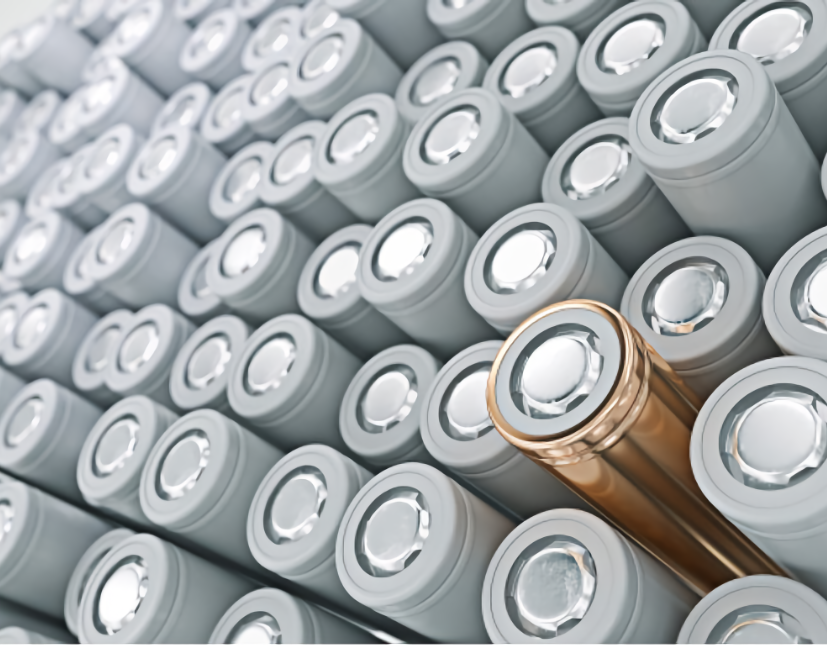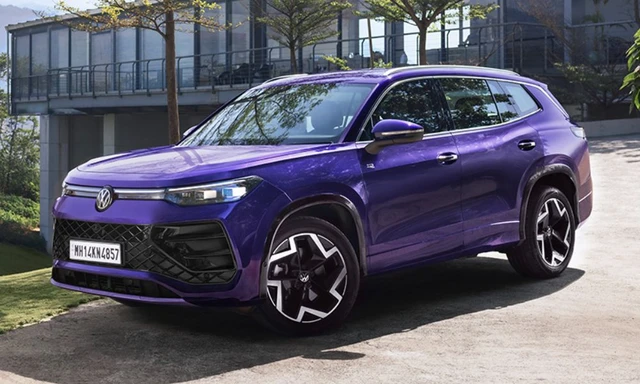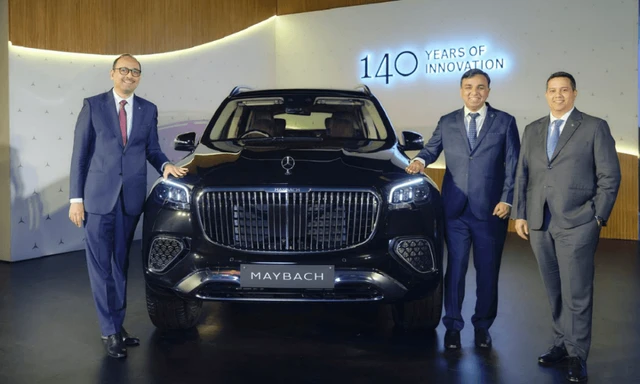EV Range Could Be Tripled With Aluminium-Ion Batteries by GMG

- These batteries can potentially charge an iPhone in less than 10 seconds
- An 8 hour charge using an Aluminium battery will be just 8 minutes long
- It has been developed by GMG in tandem with the University of Queensland
The Graphene Manufacturing Group which is based in Brisbane, Australia has come up with a massive breakthrough that has the potential to shake up the electric car market, and generally increase the use of renewable sources of energy. GMG has been developing an Aluminium-ion battery that can provide up to three times the range on EVs and charge 60 times faster. This means an 8-hour charging cycle could be reduced to 8 minutes when compared to the current generation of lithium-ion batteries.
GMG has tackled this issue with a new breed of batteries that have been developed by nanotech. Interestingly, these batteries are also safer as there is no upper ampere limit to cause spontaneous combustion. This also makes it more sustainable, easier to recycle.

The aluminium battery has 60 times faster charging
Unlike solid-state batteries which are being developed by numerous vendors like QuantumScape, these batteries are much further along in their development. QuantumScape which has received funding from Bill Gates and Volkswagen is expected to commercialise its technology by 2025.
GMG plans on bringing its graphene aluminium-ion coin cells late this year, or perhaps next year. The automotive pouch cell versions are expected to roll out by 2024.
A lot of this technology is based on nanotech from the Australian Institute of Bioengineering and nanotechnology at the University of Queensland. The battery cells use nanotechnology to insert aluminium atoms inside tiny perforations in graphene planes.
The charging speeds are so fast that an iPhone sized coin cell can be fully charged in less than 10 seconds.
"It charges so fast it's basically a supercapacitor. It charges an iPhone coin cell in less than 10 seconds," GMG MD, Craig Nicol claimed.
"So far there are no temperature problems. Twenty per cent of a lithium-ion battery pack (in a vehicle) is to do with cooling them. There is a very high chance that we won't need that cooling or heating at all. It does not overheat and it nicely operates below zero so far in testing," he added.
He also said added that these batteries will be lighter as well as they don't need extreme cooling mechanisms. "They don't need circuits for cooling or heating, which currently accounts for about 80kg in a 100kWh pack," said Nicol.
Nicol also said this battery tech could be reverse engineered to work with existing lithium-ion battery housings. This means the batteries can easily fit on current generation EV platforms like MEB by the Volkswagen group.

The Aluminium battery also has 3 times higher capacity and is vastly safer and lighter
"Ours will be the same shape and voltage as the current lithium-ion cells, or we can move to whatever shape is necessary," Nicol confirmed.
"It's a direct replacement that charges so fast it's basically a supercapacitor. Lithium-ion cells can't do more than 1.5-2 amps or you can blow up the battery, but our technology has no theoretical limit," he explains.
Aluminium batteries are getting traction, even though they have not got the press solid-state batteries have got. There are projects ongoing like the one between Dalian University of technology and the University of Nebraska. Cornell University is also working on this technology as is Stanford University in Silicon Valley. Other players - Clemson University, the University of Maryland and even the Zhejiang university and the European Alion industrial consortium.
The graphene cells are made from a custom plasma process. They don't source graphite in a standard way hence GMG is able to extract three times the energy density, from the next best cell which has been developed by Stanford University. Stanford's solution delivered 68.7 kWh and 41.2 watts per kilogram while its graphite foam bumps it up to 3,000 watts per kilogram. The GMG UQ battery in comparison gives 160 kWh and 150 watts per kilogram while a foam avatar bumps things up to 7000 watts per kilogram.
"They (UQ) found a way to make holes in graphene and a way to store Aluminium atoms closer together in the holes. If we drill holes the atoms stick inside the graphene and it becomes a whole lot more dense, like a bowling ball on a mattress," added Nicol.
Latest News
 Jaiveer Mehra | Jan 15, 2026Volvo EX60 SUV Global Debut On Jan 21; Will Offer 810 km RangeNew GLC EV rival will be the first Volvo to use the next-gen SPA3 platform and support 400 kW fast charging.1 min read
Jaiveer Mehra | Jan 15, 2026Volvo EX60 SUV Global Debut On Jan 21; Will Offer 810 km RangeNew GLC EV rival will be the first Volvo to use the next-gen SPA3 platform and support 400 kW fast charging.1 min read Jaiveer Mehra | Jan 15, 2026India-Spec Volkswagen Tayron RevealedThree-row SUV will be offered in the R-Line trim with features like 19-inch wheels, a 15-inch touchscreen, front seats with ventilation & massage function and more.1 min read
Jaiveer Mehra | Jan 15, 2026India-Spec Volkswagen Tayron RevealedThree-row SUV will be offered in the R-Line trim with features like 19-inch wheels, a 15-inch touchscreen, front seats with ventilation & massage function and more.1 min read car&bike Team | Jan 15, 2026Mercedes-Benz EQS SUV Gets A Celebration Edition For 2026, Prices start at Rs. 1.34 CroreThe new celebration edition will be available with both the EQS 450 and the EQS 580 versions of the SUV.1 min read
car&bike Team | Jan 15, 2026Mercedes-Benz EQS SUV Gets A Celebration Edition For 2026, Prices start at Rs. 1.34 CroreThe new celebration edition will be available with both the EQS 450 and the EQS 580 versions of the SUV.1 min read Jaiveer Mehra | Jan 15, 2026Auto Sales: Mercedes-Benz Sales Decline 3 Per Cent; 19,007 Units Sold In CY2025The German carmaker reported year-on-year growth in sales for its Top-End Vehicles (TEVs), EV range, and AMG models, although sales in entry-level segments were down 20 per cent.3 mins read
Jaiveer Mehra | Jan 15, 2026Auto Sales: Mercedes-Benz Sales Decline 3 Per Cent; 19,007 Units Sold In CY2025The German carmaker reported year-on-year growth in sales for its Top-End Vehicles (TEVs), EV range, and AMG models, although sales in entry-level segments were down 20 per cent.3 mins read Jaiveer Mehra | Jan 14, 2026Bajaj Chetak C25 Launched In India; Prices Start From Rs 91,399The new series is the most affordable under the Chetak family and gets a hub-mounted electric motor - a first for the Chetak family.2 mins read
Jaiveer Mehra | Jan 14, 2026Bajaj Chetak C25 Launched In India; Prices Start From Rs 91,399The new series is the most affordable under the Chetak family and gets a hub-mounted electric motor - a first for the Chetak family.2 mins read car&bike Team | Jan 14, 2026India-Made Mercedes-Maybach GLS Launched At Rs 2.75 CroreThe locally assembled Maybach GLS is Rs 42 lakh cheaper than the imported model.1 min read
car&bike Team | Jan 14, 2026India-Made Mercedes-Maybach GLS Launched At Rs 2.75 CroreThe locally assembled Maybach GLS is Rs 42 lakh cheaper than the imported model.1 min read
 Bilal Firfiray | Jan 9, 2026Toyota Urban Cruiser Hyryder: 10,000 km Long-Term ReviewAfter spending over three months and 10,000 km with the Toyota Urban Cruiser Hyryder Hybrid, we were impressed by its real-world mileage, seamless hybrid, practical comfort, and Toyota reliability. Is it the best C-SUV then?5 mins read
Bilal Firfiray | Jan 9, 2026Toyota Urban Cruiser Hyryder: 10,000 km Long-Term ReviewAfter spending over three months and 10,000 km with the Toyota Urban Cruiser Hyryder Hybrid, we were impressed by its real-world mileage, seamless hybrid, practical comfort, and Toyota reliability. Is it the best C-SUV then?5 mins read Seshan Vijayraghvan | Jan 8, 20262026 Mahindra XUV 7XO Review: Big On Tech, Bigger On ComfortThe new Mahindra XUV 7XO is flashier, feature packed, and comes with more advanced tech. But are the changes just incremental or actually substantial?1 min read
Seshan Vijayraghvan | Jan 8, 20262026 Mahindra XUV 7XO Review: Big On Tech, Bigger On ComfortThe new Mahindra XUV 7XO is flashier, feature packed, and comes with more advanced tech. But are the changes just incremental or actually substantial?1 min read Preetam Bora | Jan 10, 2026Simple One Gen 2 First Ride Review: 265 km Claimed Range!The Gen 2 model of Simple Energy’s first electric scooter gets a fair few updates, including new features, tech, more range and lighter weight. We spent a couple of hours with the Simple One Gen 2 to find out if it manages to impress.6 mins read
Preetam Bora | Jan 10, 2026Simple One Gen 2 First Ride Review: 265 km Claimed Range!The Gen 2 model of Simple Energy’s first electric scooter gets a fair few updates, including new features, tech, more range and lighter weight. We spent a couple of hours with the Simple One Gen 2 to find out if it manages to impress.6 mins read Amaan Ahmed | Jan 3, 2026VLF Mobster 135 300 KM Review: Fun But FlawedA 125 cc scooter with Italian design and Chinese genes is a rare combination, and while some may be tempted to dismiss it because of its origins, the VLF Mobster shows 125s can also be exciting – but not without compromises.11 mins read
Amaan Ahmed | Jan 3, 2026VLF Mobster 135 300 KM Review: Fun But FlawedA 125 cc scooter with Italian design and Chinese genes is a rare combination, and while some may be tempted to dismiss it because of its origins, the VLF Mobster shows 125s can also be exciting – but not without compromises.11 mins read Preetam Bora | Dec 30, 2025TVS Orbiter Review: Real-World Performance and Range TestedThe TVS Orbiter is a promising electric scooter promising decent range, practicality and pricing. But is there any reason to avoid it? We spent a few days getting to know it better.9 mins read
Preetam Bora | Dec 30, 2025TVS Orbiter Review: Real-World Performance and Range TestedThe TVS Orbiter is a promising electric scooter promising decent range, practicality and pricing. But is there any reason to avoid it? We spent a few days getting to know it better.9 mins read





























































































































